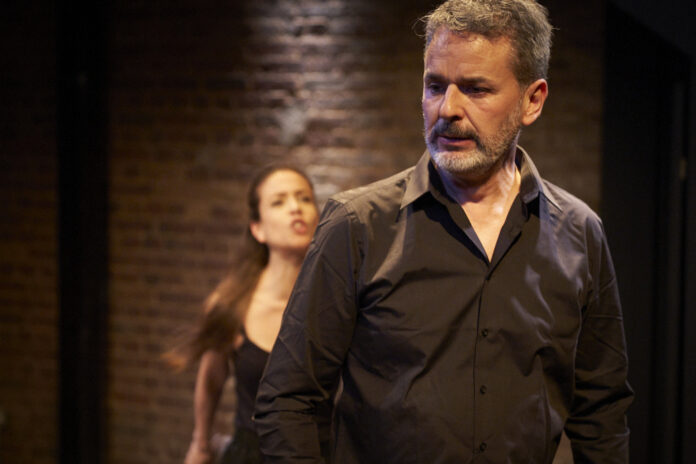“A beautiful theatrical journey, full of unanswered questions.” This has been the journey of these five and a half years of the Cervantes Theater in London, under the shared baton of Jorge de Juan and Paula Paz. Neither Brexit nor the pandemic were able to deal with this endearing and incomparable showcase of the best of our performing arts, which is reborn with the most ambitious program since its creation.
The fire opened this week “The function to be done / The pay to be played”, by Miguel del Arco and Aitor Tejada. Next will be “Rotten Toys”, by Carolina Román, and the operetta “Black el clown”, in collaboration with the Arcola Theater and as a preview of the “Red UK” programme. In autumn, “La alegría” by Marilla Samper will arrive, and so on until the end of the golden age with the dramatized reading of “Fuenteovejuna” by Lope de Vega, in a version by Juan Mayorga.
60% of the spectators at the Cervantes Theater are British, doubly attracted by the possibility of seeing the plays in Spanish and English, with an incredible cast of bilingual actors and actresses. The small great theater, under the arches of Southwark, has also been a hotbed of the future: more than 10,000 British students have passed through its seats, to the eternal claim of Lorca (“The house of Bernarda Alba” was on the bill for seven weeks with 96 % of capacity).
“We are facing a bulwark of Spanish culture in the world cradle of theatre,” said Isabel Izquierdo, promotion director of Acción Cultural Española, who has contributed 80,000 euros to this year’s programming, as she passed through London. “The Cervantes Theater is really a unique space, full of intensity, with those sounds of the train that wonderfully blend into the work.”
“The show to be done” once again put to the test the capacity of the theater to envelop the viewer and make them participate in what is going on on stage. “I have not directed a show,” boasts Jorge de Juan, who was doubly spellbound by the work of Miguel del Arco and Aitor Tejada when he saw it at the Lara theater and at the Pavón Kamikaze theater.
The work is loosely inspired by Pirandello and his “Six characters in search of an author”, who treacherously burst into a current comedy and have to sweat their stuff to be able to tell their drama. “What is reality? Where does fiction begin and where does it end?” asks Jorge de Juan, referring to what Stanislavsky said: “Art is, by its very nature, a product of the imagination, the reality is not art.”
In his role as “maker of illusions”, Jorge de Juan aspires to disappear in the middle of the “hyper-realistic function”, although the character who plays the Actor (Jesús Gallo) sometimes rebukes him by name and asks him to turn on the lights , while the Actress (Fuensanta Vera) reminds viewers that there is still time to return the ticket and get their money back.
Meanwhile, Jorge Lucas leads the cast of “Pirandellian” characters, accompanied by Candela Gómez, Gian Carlo Ferrini and María Estévez-Serrano. Half of the cast will also perform the English version in two weeks, with translation by Simon Breden. The complicity is finally provided by the spectators -British, Spanish or Latin- accustomed to navigating between the two languages.
To promote the projection of Spanish authors even more, the Cervantes Theater is launching the Red UK program this season, which starts with a special collaboration with the Arcola Theatre, one of the great references of the Off West End. The chosen work was the operetta “Black el Payaso”, with music by Pablo Sorozábal.
“The idea is to continue seeking alliances with British theaters where our plays can be temporarily performed and thus reach a wider audience,” explains Paula Paz. The Cervantes Theater thus widens its horizons, defined until now in three main lines (new drama, contemporary theater and golden age) and expanded during the pandemic with the “streaming” of dramatized readings, which have often served to calibrate “the works that can travel well”.
Conforms to The Trust Project criteria








